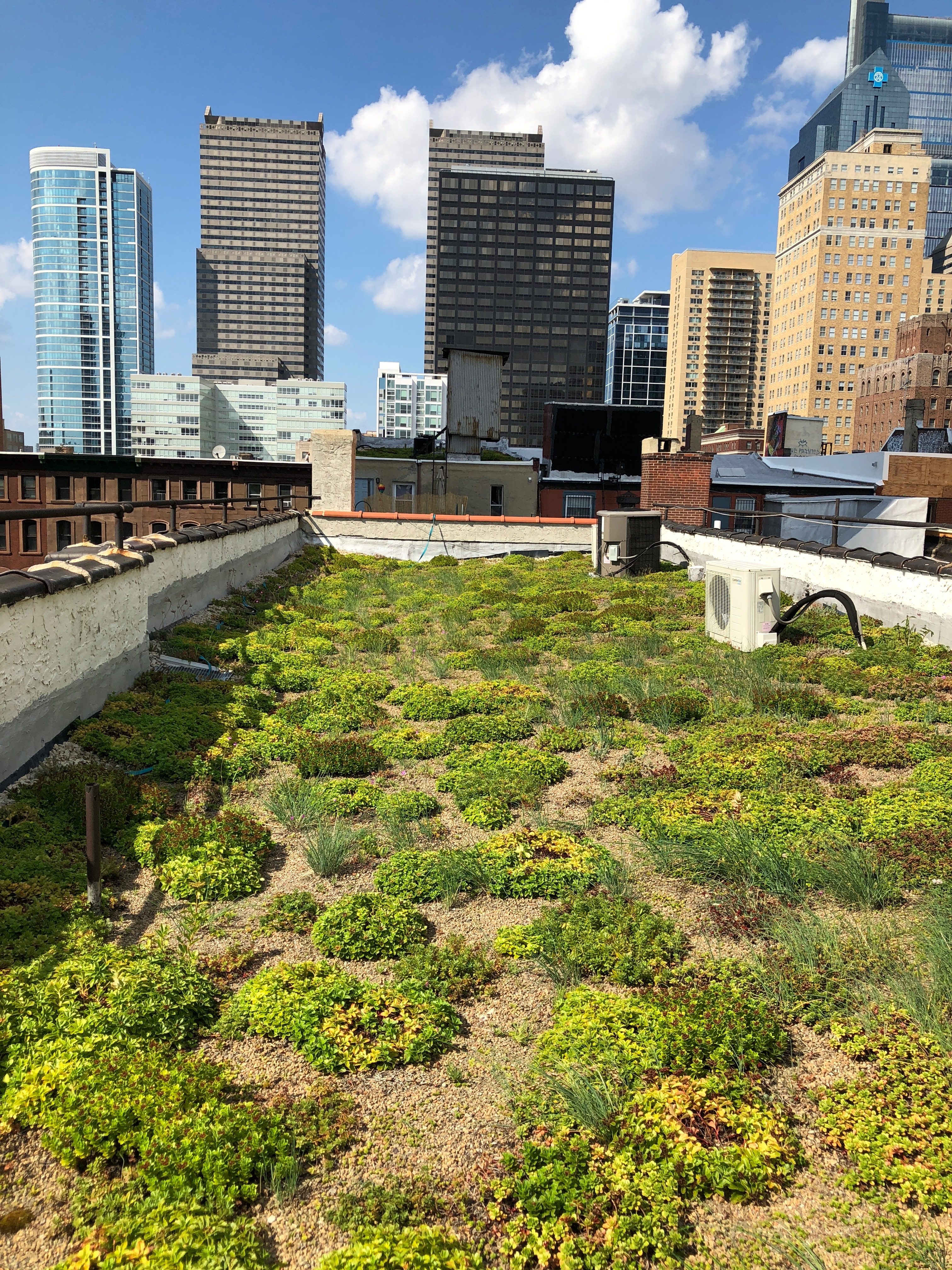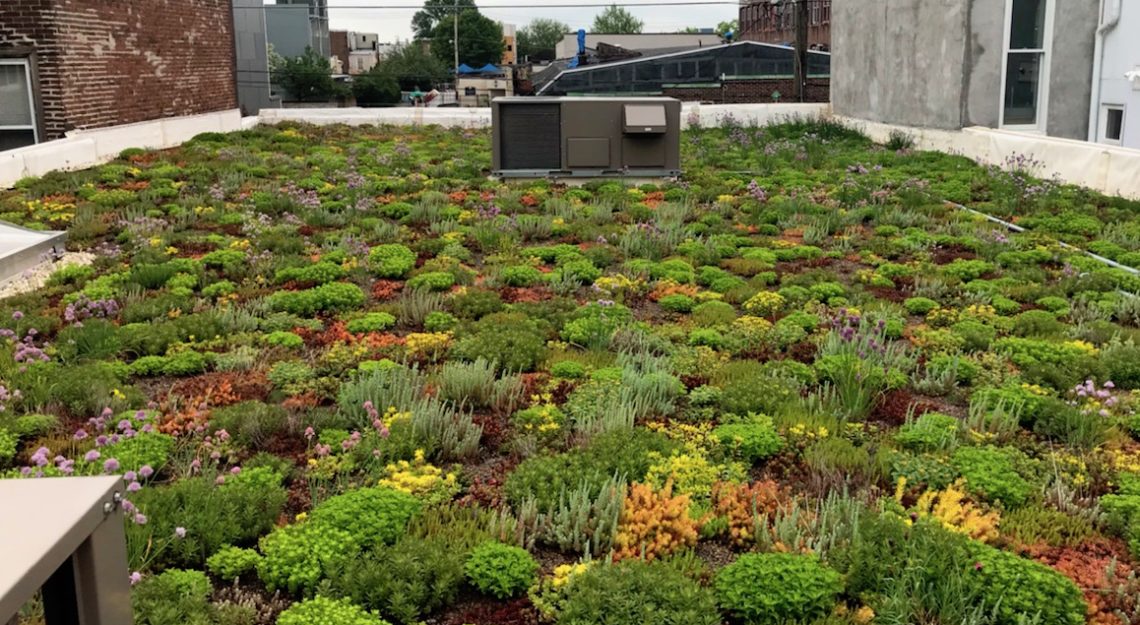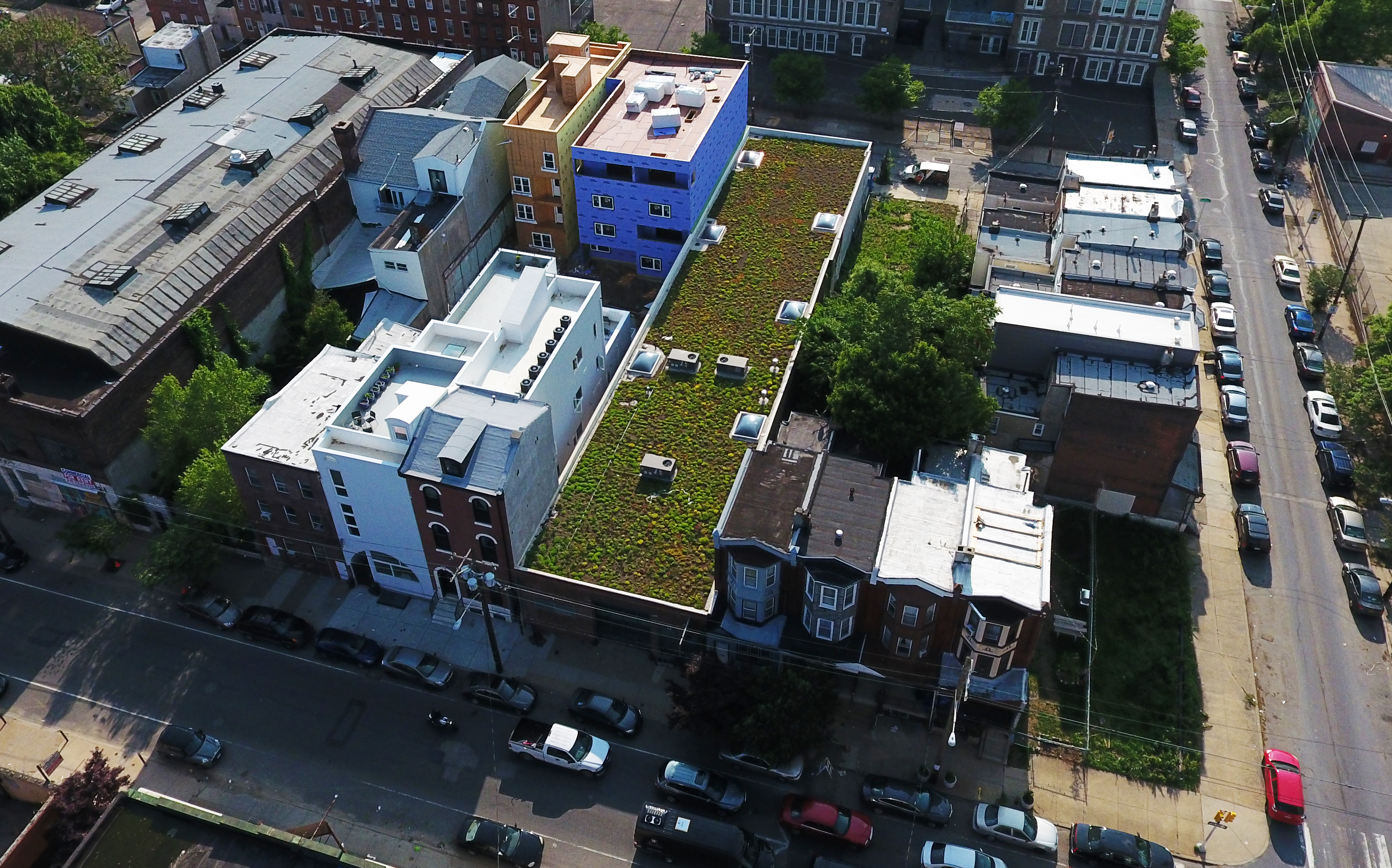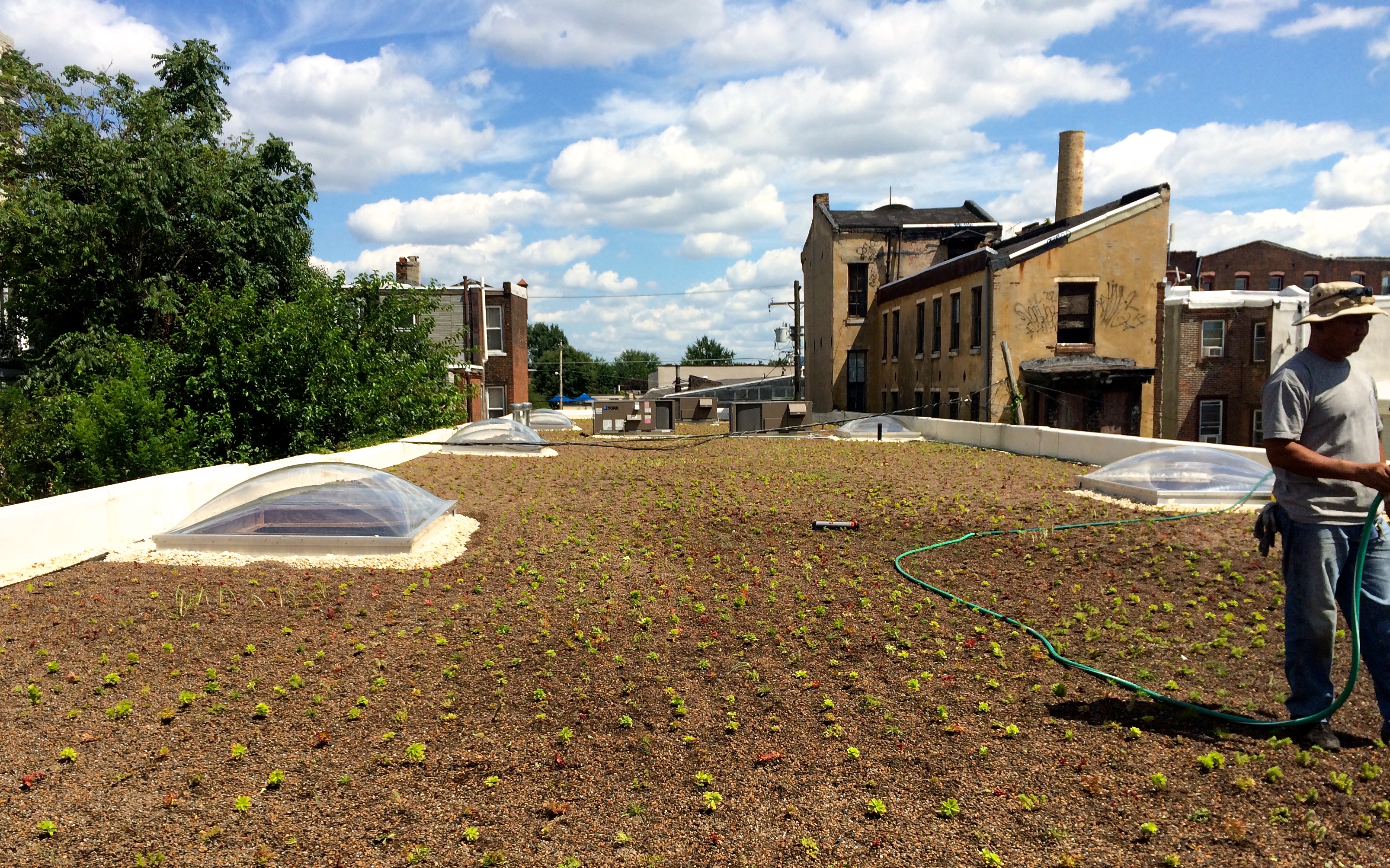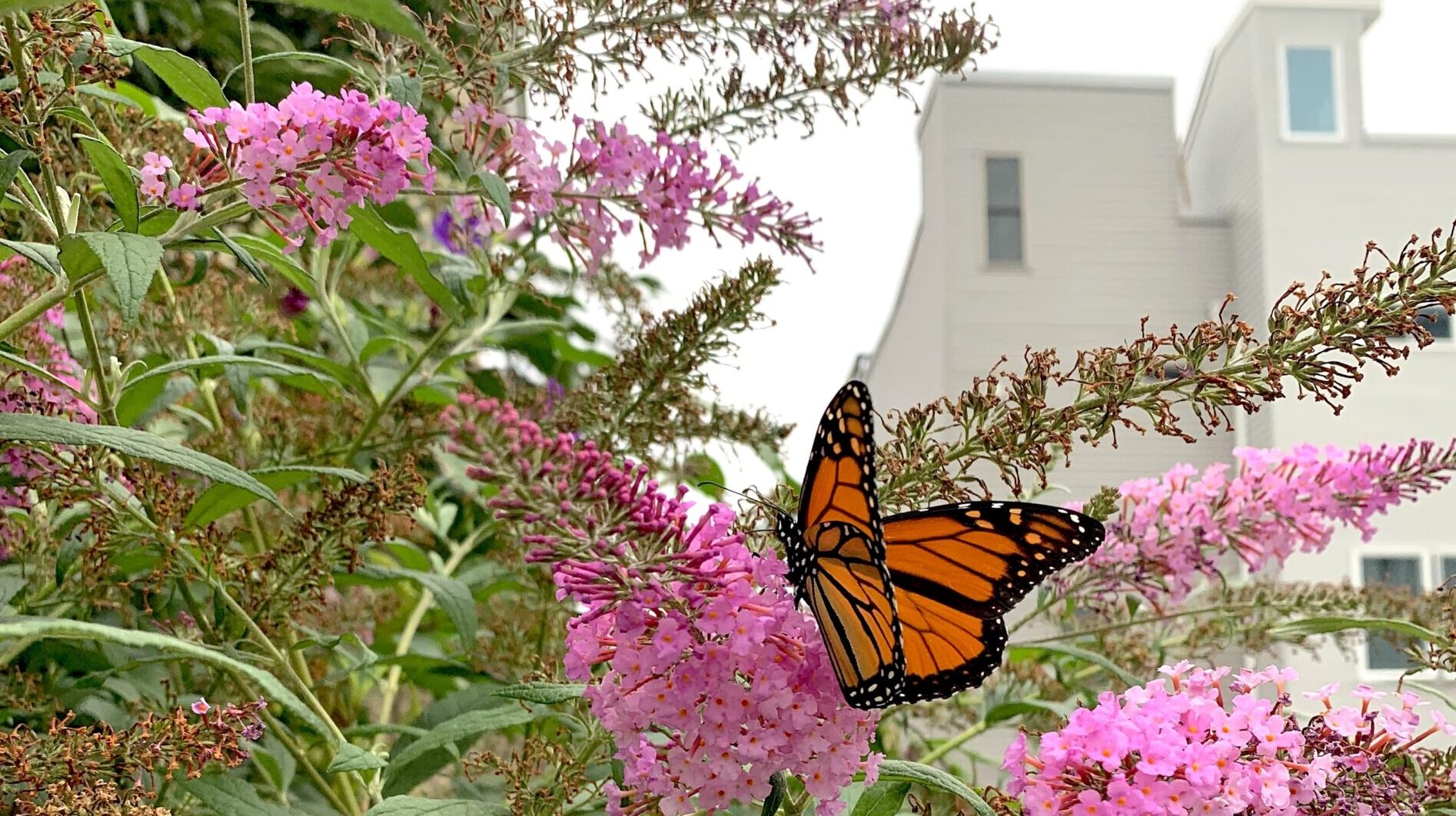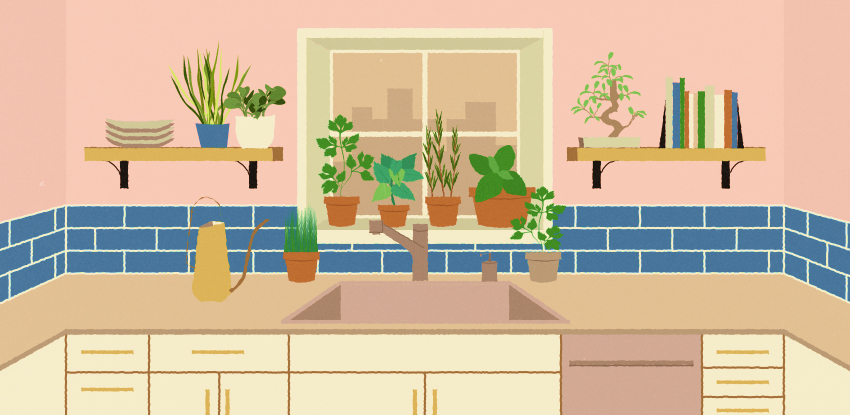green roof
What Do Green Roofs Actually Do?
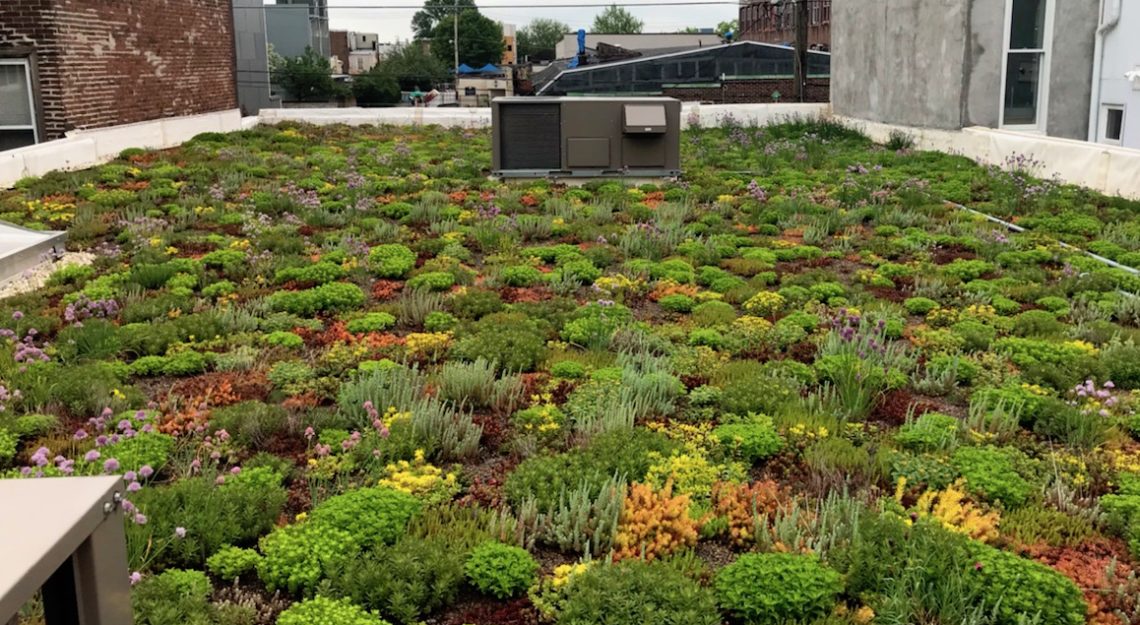
Ever wonder about the growing trend of creating green roofs? How do they work and what are the benefits? We spoke with Solo Real Estate owner Deborah Solo about her 10 years of experience creating green roofs, both on her own homes and for commercial properties.
A green roof is exactly what it sounds like: a roof topped with plants. More specifically, the roof is first laid with a protective, rot-proof sheet which sits directly on the waterproof membrane. Then, a layer of engineered soil media is put down, a place for the plants to take root. The plants used are called sedums, commonly referred to as ‘stonecrop’, and many different varieties of these drought-resistant plants can be used. A selection of different plants can be chosen by the owner based on function and aesthetics.
Solo worked with Jeanne Weber at Philadelphia Green Roofs to install a series of four green roof sections on the Solo Real Estate offices at 2017 Chancellor St. Additionally, Solo and Weber worked together to create a green roof on a commercial property in Kensington, completed in 2015. That roof is about 7600 square feet, which is fully covered by the green roof plantings.
So, what are the benefits of green roofs?
Green Roofs absorb rainwater
One of the main ways green roofs contribute to a positive environmental impact is their ability to absorb rainwater. Every time it rains, sewers in Philadelphia overflow and send untreated sewage water into the Schuykill and Delaware rivers. The reality is this is one of the worst kinds of pollution for the waterways, and unfortunately, Philly’s early 19th-century sewer system is especially prone to these surges. By absorbing some of that rainwater, the green roofs keep more overflow water out of the rivers.
The city takes this benefit so seriously that they even eliminate the storm water charge for buildings which have a green roof. Additionally, new construction that includes a green roof may be eligible for a Philadelphia Green Roof tax credit from the city. Existing buildings that are retrofitted with a green roof may also be eligible for grant money.
They help with pollution
Green roofs also contribute to easing pollution in the city. The living plants filter particulate matter out of the air, and pollutants out of the rainwater they absorb. They also put oxygen back into the air, making our air more breathable. In a city with over 1.5 million people and over 140 square miles of built environment, green spaces are precious and needed. Not only do green roofs provide environmental benefits, but they add green space to a city where it otherwise wouldn’t have been.
They keep things cool
Green roofs are known to be great insulators. During the summers, the hot sun will beat down during the day onto the roof, and the heat is absorbed by the house. A traditional black roof can reach temperatures of 159 degrees, but a green roof will typically not rise above 88 degrees. This difference can have a huge effect on the interior temperature of the building, and help with cooling costs. If your air conditioning unit is located on your roof, the green roof will provide much cooler air for that unit to pull from, and significantly lower costs.
Beyond the individual buildings, green roofs help combat what is known as the “urban heat island effect” in which the concentration of black tar and traditional roofs in a city can raise temperature up to 16 degrees over the surrounding countryside. Again, the more green spaces that are created in the city, the cooler it will be.
They extend the life of the roof
One of the biggest savings a green roof can provide is for the life of the roof itself. Green roofs protect the roofing membrane from harmful UV rays, and thereby extend the life of the roof far beyond traditional materials. In fact, they can last almost twice as long as less-protective options. And contrary to common misconception, green roofs don’t need as much maintenance as one might expect. Many don’t require any watering at all, depending on the type of sedums used. Unlike traditional gardens, they are built to be hearty, permanent surfaces, and can provide a low-maintenance, efficient roofing solution for many years.
Solo’s Commitment to Environmental Care
Given the fact that green roof can be more expensive to install, what makes Solo interested in exploring ways to incorporate them into their buildings? In a large part, it stems from Deborah Solo’s personal commitment to environmental sustainability.
“Those are important ideals,“ she says. “Being conscientious about the planet. Raising my children, there were lots of things in terms of our personal lifestyle that I felt were important, and they’re important issues politically in the world. If I want to give back to the planet, this is reducing my carbon footprint.”
Interested in joining Solo in our environmental efforts? Visit us at Greenfest, Philly’s largest environmental festival. Solo will be present to talk about ways we are working towards sustainability in our properties. Plus, you can pick up a free recycle bin at our booth!
Sun, September 9, 10am- 4pm
At Bainbridge Green in Queen Village





